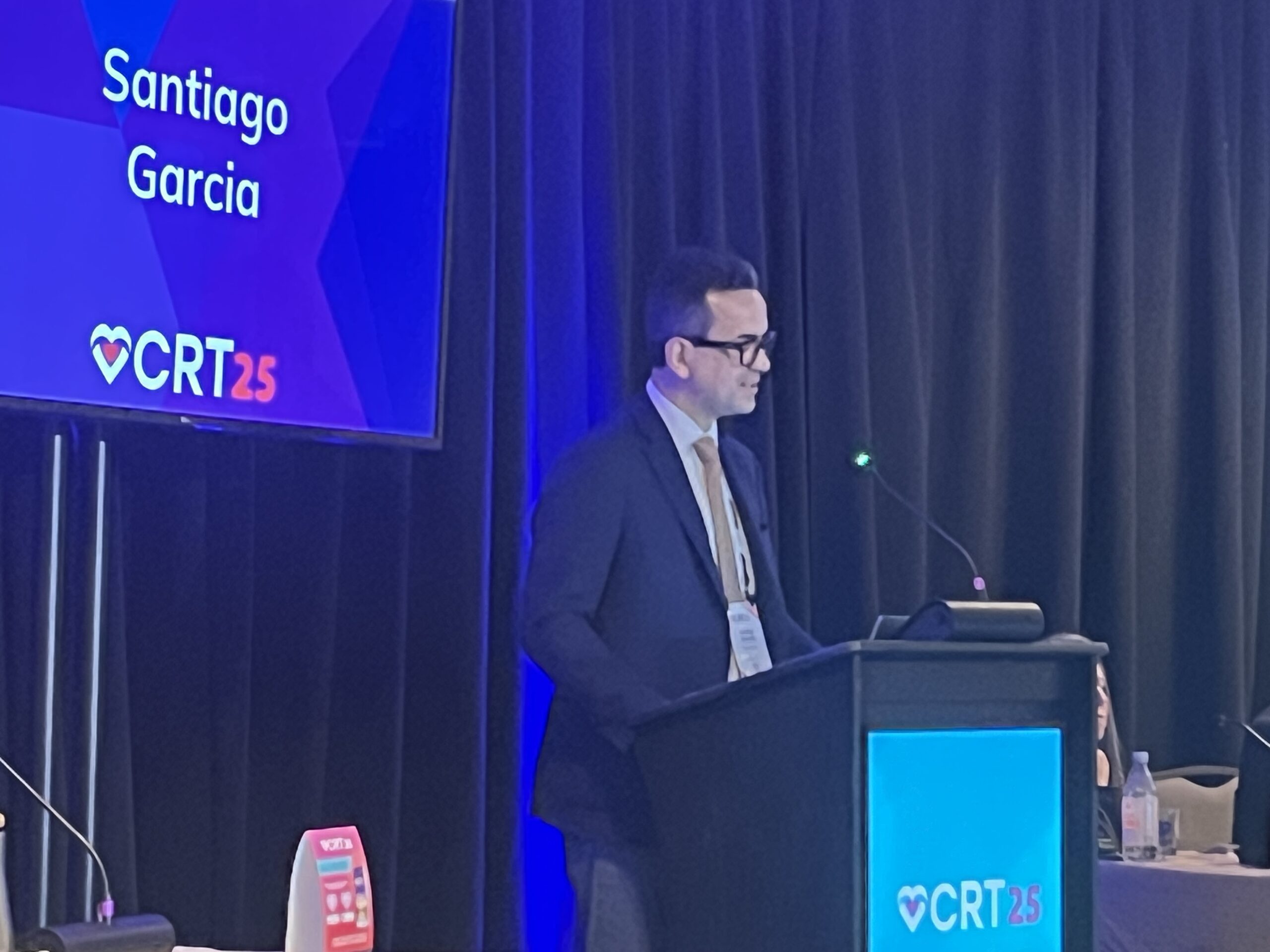
Details of the successful first-in-human cases of robotic-assisted transcatheter mitral valve replacement (TMVR) using the Capstan system (Capstan Medical), which is remotely controlled using a controller modelled on the type used for the Xbox games console, were shared at the 2025 Cardiovascular Research Technologies (CRT) meeting (8–11 March, Washington DC, USA).
Santiago Garcia (Christ Hospital, Cincinnati, USA) presented details of the two cases, which were performed by Gonzalo Martinez, the director of the Endovascular Therapy Center at Pontifical Catholic University of Chile (Santiago, Chile) and his team, in February.
“Capstan is a fully integrated, robotically controlled TMVR system, designed to maximise physician control of the implant and also expand the pool of patients that can benefit from TMVR,” Garcia said in his presentation.
The system consists of three main components, he detailed, including the mitral valve implant, which consists of a “dual-stent” system with a valve housing unit of 27mm intended to provide an effective orifice area (EOA) of 3.3 cm2; a delivery catheter (33 Fr); and, the catheter control system. The implant is manipulated using the Xbox controller which can be used to navigate the mitral valve anatomy. Deployment is staged and controlled, and the operator retains the ability to modify the catheter trajectory, depth and position until close to the end of the procedure.
Detailing the first-in-human case performed in Chile, Garcia noted that the patient was not a suitable candidate for surgery due to the presence of multiple comorbidities. The case took around 120 minutes to complete, and final results were “excellent”, he said, with no evidence of paravalvular leakage (PVL) and complete elimination of mitral regurgitation (MR). A second case, performed the following day, was also successful, and took a total of 90 minutes to complete.
Both cases had an excellent result, there was no residual MR, no issues with the left ventricular outflow tract (LVOT), no PVL, no wire in the left ventricle and no rapid pacing was required, he described.
“This is a technology that provides unparalleled control and simplicity in navigating the very complex mitral valve anatomy,” Garcia commented. “It is a dual stent system that conforms to the native anatomy, [has a] very low profile in the ventricle to minimise interaction with the LVOT and it is a staged deployment that is very controlled and allows for hemodynamic stability throughout the procedure.”
More cases using the Capstan system are expected to be carried out in Canada and Australia in the near future, Garcia outlined, and an US early feasibility study (EFS) using the system is slated for 2026.










